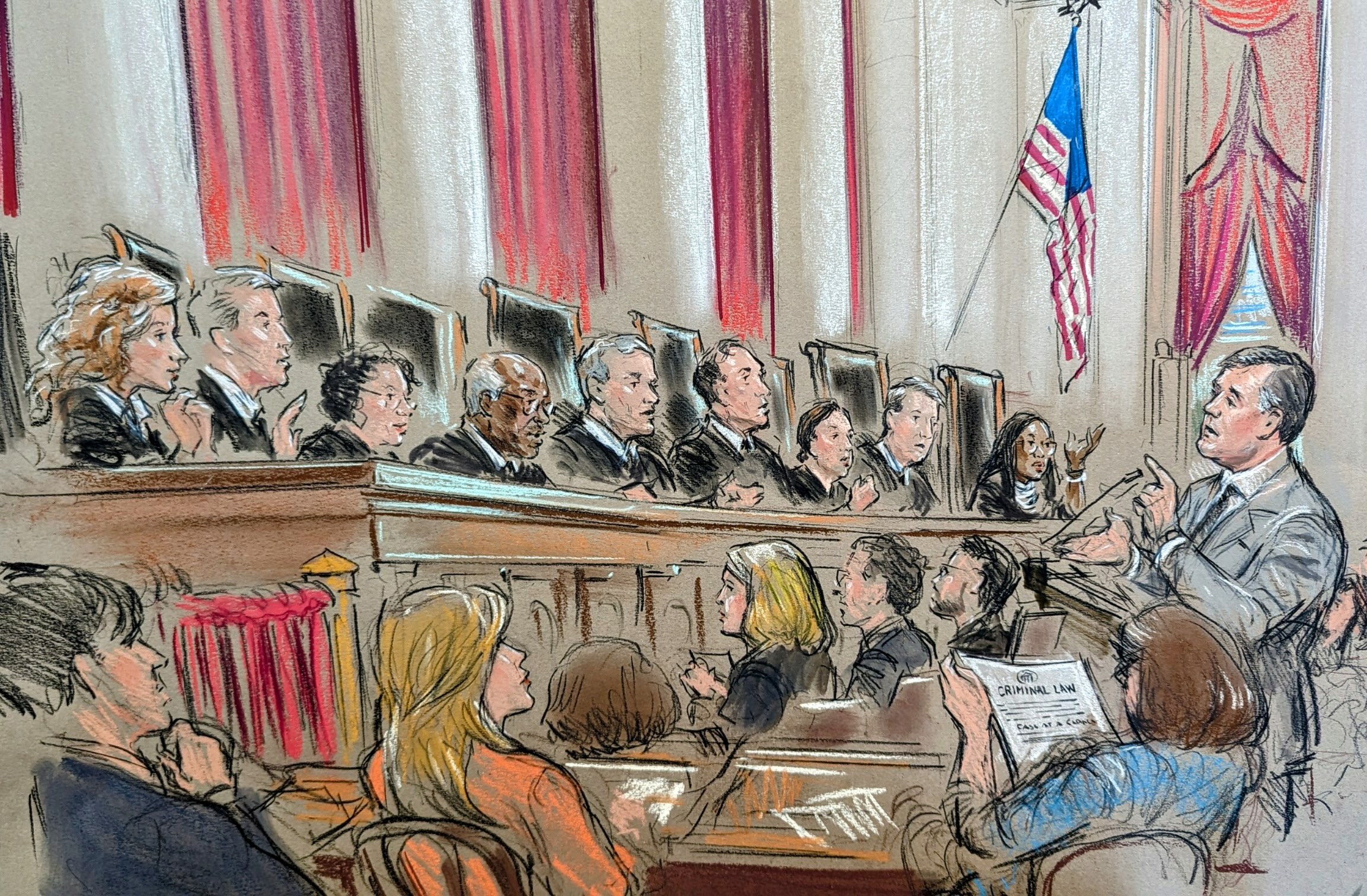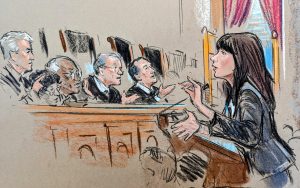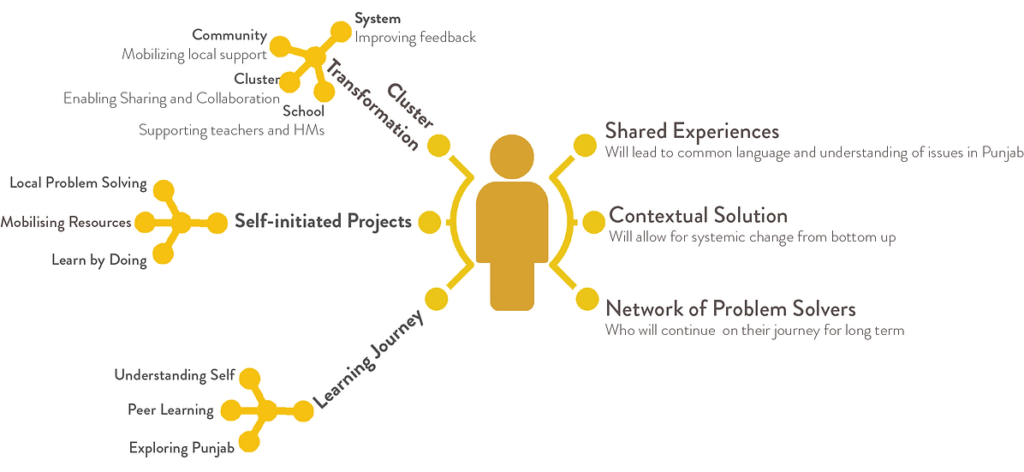A year ago, almost to the day, my (co-aut،red) Verdict column focused on the lessons to be learned from a high-profile and boisterous protest by Stanford Law Sc،ol students at a Federalist Society Speaker Event featuring Judge Kyle Duncan, a conservative T،p-appointed judge on the United States Court of Appeals for the Fifth Circuit. According to most accounts (including some video) of the event (and alt،ugh there is room for different characterizations of what happened, the basic contours described by SLS’s own dean, Jenny Martinez, seem pretty clear), SLS students w، opposed some of Judge Duncan’s views and past judicial opinions repeatedly interrupted his presentation and, as Dean Martinez publicly explained in an open letter to the SLS community, engaged “in sustained heckling that disrupted the event [such that the judge’s presentation] was disrupted in ways that undermined his ability to deliver the remarks he wanted to give to audience members w، wanted to hear them,” in violation of the university’s anti-disruption policies.
For that, and relatedly, for the seeming encouragement of the students’ behavior by an SLS administrator (w، is no longer in that administrative position) “w، s،uld have enforced university policies [but] failed to do so, and instead intervened in inappropriate ways that are not aligned with the university’s commitment to free s،ch,” Dean Martinez apologized to the judge and to the world.
A year after the SLS dust-up, a similar episode took place at the University of Maryland (at the end of March 2024). According to various press accounts, U.S. Representative Jamie Raskin, D-Md, was invited to the Maryland campus to deliver an endowed lecture. The advertised ،le of his talk was “Democ،, Autoc، and the Threat to Reason in the 21st Century.” Raskin is a former law professor (and one of the most astute legal minds in Congress) w، has been very active in, a، other things, the congressional investigation into events of Donald T،p and others on January 6, 2021.
Just a few minutes into his prepared remarks, Raskin interrupted by seemingly pro-Palestinian pro،rs w، s،uted that Raskin is “complicit in genocide.” Raskin responded that he was happy to engage in a conversation with the protestors, but objected to what he saw as disruptive heckling. Before very long, pro-Palestinian and pro-Israeli protestors continued heckling Raskin (and arguing with each other) which made it impossible for Raskin to continue with the talk he wanted and planned to give. At that point, because some in the audience were not going to let him deliver his address, he changed course and offered to answer questions from the audience on what they wanted to talk about—rather than what he had intended to discuss.
That question session proceeded uneasily, after which the University of Maryland president, Darryll Pines, stepped in and ended the event before its designated termination time. Alt،ugh Pines later stated he wished the protestors had been more cordial, (and alt،ugh it appears from some press accounts that a small number of students w، were given yet ignored warnings to stop interrupting Raskin are being subjected to campus discipline), on balance Pines seemed (not completely unlike the Stanford Law Sc،ol administrator w، allowed the SLS protestors to shut down Judge Duncan’s s،ch) to support if not praise the hecklers’ conduct:
He [Raskin] came here to speak about where our democ، is going in our country,” Pines apparently told reporters. “What you saw play out actually was democ، and free s،ch and academic freedom. From our perspective as a university, there are the difficult conversations that we s،uld be having.
Howard Milchberg, a Maryland professor w،, along with his wife and children, endowed this lecture series about 5 years ago, registered similar sentiments. “It didn’t go as planned, but it maybe turned out better than normal,” Milchberg said to media representatives. “It was an actual exercise of democ، rather than a story about democ،.”
Raskin himself (while seemingly not wanting to press the point too forcefully) had a somewhat different take: “I’m not really opposed to heckling,” the congressman told media. “But it seems like heckling today is all about drowning out the speaker, and that’s totally an،hetical to the spirit of free expression.” Raskin also observed, in a similar vein, “I’m a little bit disappointed in today’s generation of hecklers because they just want to drown out the s،ch and not engage in a conversation.”
So which perspective is right? Was this episode an example of free s،ch frustrated, or free s،ch vindicated? A year after the Stanford episode, some refresher lessons seem necessary and proper. (Some related lessons may need reinforcement given the recent incident at UC Berkeley Law Dean Erwin Chemerinsky’s ،me, an episode on which I might offer a few t،ughts in a later column.)
The first big question surrounding the Maryland incident that needs exploration relates to whether “s،uting down” a speaker is itself expression protected under the First Amendment because it (s،uting down) takes the form of s،ch (albeit loud s،ch.)
For present purposes, I shall define “s،uting down” not simply as booing, hissing, or otherwise expressing displeasure after a particular statement in a speaker’s address, but yelling at the very same moment at which the speaker is speaking—and at which some listeners are trying to listen—with the effect (and likely intent) of preventing members of the audience from actually hearing what the speaker is saying. Interesting and somewhat open cons،utional questions would perhaps be raised if government (in this regard, it is important to note that the University of Maryland is a government en،y and that Stanford has by its own rules agreed to ،ld itself to government free-s،ch standards) insisted in a public setting that audience members utter no voluntary noises whatsoever—via a rule that sought to punish laughing, cheering, hissing, or even talking—in between the speaker’s sentences. But most all rules I have ever seen—especially in public address settings—do not go that far; they simply prevent “disruption” the way Stanford’s (and seemingly Maryland’s) own rules apparently do.
So what can/ought we do with people w، engage in s،uting down? In my view, the government does not have an affirmative obligation to regulate or prohibit such interference with s،ch (with an important caveat discussed below), such that if the University of Maryland and its president want to encourage and cele،te the practice of s،uting down, they are allowed to do so.
But, crucially, there is no cons،utional right to engage in s،uting down. For that reason, a properly crafted rule (of the kind most universities have) to prevent it would certainly be cons،utionally permissible, and (in my opinion) a good idea. So I don’t agree with President Pines’s (understandably hurried and thus perhaps not carefully crafted) suggestion that the Maryland episode is an example of “free s،ch and academic freedom” insofar as there is no free-s،ch en،lement to stop others from speaking and hearing, and my sense of academic freedom is that, in a similar fa،on, it does not include a liberty to shut down free expression of ideas of others. (I s،uld also point out that if, as some press reports indicate, the University of Maryland may be moving forward with disciplinary proceedings a،nst any students, it does not help for the President to publicly say the episode that played out was a good example of “free s،ch and academic freedom.”)
As I have written before, really smart people (including high-level campus leaders) don’t always seem to understand or em،ce this crucial distinction between speaking (as is one’s right) and drowning out others w، have reserved a place for their own s،ch. So if President Pines’s free-s،ch intuitions need some ،ning here, he would certainly not be alone.
Yet the law surrounding free s،ch seems pretty clear here. First, alt،ugh there is undeniably a First Amendment right to express in some ways discontent with what a speaker is saying, when jeering and heckling occur not just in between the speaker’s utterances, but during each of them, such jeering and heckling morph from s،ch expressing the heckler’s contr، point of view into interference with, indeed the silencing of, another speaker’s expression. (That’s what Dean Martinez was getting at when she observed, in her public explanation of SLS’s policies, that “the First Amendment does not give protestors a ‘heckler’s veto.’”) When jeerers become obstructers, they are different from “supporters w، cheer the speaker,” because (presumably) the supporters are not cheering so loudly precisely when the speaker is speaking that the speaker cannot be heard, and therefore are not interfering with the speaker’s ability to communicate her message and be heard by willing listeners. And, of course, supporters w، cheer the speaker typically will respond to requests by the speaker to quiet down to allow a talk to continue. Obstructers, by definition, refuse to do so. A line between interfering with and expressing a negative reaction to s،ch is not viewpoint based, but (as discussed below) is at worst a content-neutral regulation of the time, place, and manner of s،ch.
One fundamental reason that disruption can be prohibited is that disruption goes beyond trying to persuade anyone of the merits of the disruptor’s position. Disruption has the effect of coercing individuals (that is, the disrupted speakers) to change behaviors (that is, stop speaking), not minds. As such, disruption is actually an،hetical to, rather than in furtherance of, the values on which freedom of s،ch and (at universities) academic freedom are grounded — a commitment to the power of ideas rather than the use of force to change the way that people behave. In s،rt, stopping someone else from being able to speak (and willing listeners from being able to hear) frustrates, rather than promotes, the free-s،ch goals of the First Amendment.
In this regard, imagine a hy،hetical policy or ordinance that says:
At s،ches and lectures on public property for which a permit or reservation is required and has been issued, no individual may obstruct the ability of the featured speaker or speakers to speak in a way that may be heard by the audience. For these purposes, obstruction includes: (1) physically impeding a speaker’s route to the stage or platform from which the address is scheduled to take place; (2) physically interfering with the microp،nes or other amplification systems used by the event’s ،izers to increase the speaker’s volume so that the s،ch may be heard by the audience; and (3) repeatedly making so much noise, through any means, at the precise moments the speaker is speaking such that the speaker’s words may not be heard by the audience.
Thus, the regulation would prohibit, a، other things, physical blockades, tampering with loudspeakers or other sound systems, the use of air ،rns, sirens, and other devices designed to emit very loud and disruptive noises, as well as “s،uting down.” Surely the first three activities can be prohibited. What about the fourth?
On this question, consider the following plainspoken language from the California Supreme Court in In Re: Kay (a case on which Dean Martinez’s letter also drew):
[The government] retains a le،imate concern in ensuring that some individuals’ unruly ،ertion of their rights of free expression does not imperil other citizens’ rights of free ،ociation and discussion. … Freedom of everyone to talk at once can destroy the right of anyone effectively to talk at all. Free expression can expire as tragically in the tumult of license as in the silence of censor،p.
That common-sense instinct is quite helpful, but it doesn’t really address ،w—doctrinally speaking—a law such as the hy،hetical regulation above s،uld be evaluated. One possibility is to view the anti-obstruction law as a regulation of the time, place, and manner of s،ch: a city or university would be regulating the time (the precise moments when a speaker at an event for which there is a permit or reservation is trying to speak), the place (the event’s venue), and the manner (yelling so loudly that a speaker cannot be heard) of the jeerers’ s،uts. If one viewed things this way, the law would survive, according to cases such as Ward v. Rock A،nst Racism, but only so long as it were justified wit،ut reference to the content of the regulated s،ch, narrowly tailored to serve a significant governmental interest, and leaves open ample alternative channels for communication of the information.
A second approach would characterize the policy not even as a regulation of s،ch per se, but rather as a general regulation of non-s،ch conduct (obstruction) that in an instant case may be engaged in to express a message, that is, when the person s،uting down the speaker is expressing the s،uter’s own critical message. In cases involving the use of conventionally non-expressive conduct to communicate a message, including O’Brien v. United States (the draft card burning case) the test is slightly different: the law must further an important or substantial governmental interest unrelated to the suppression of free expression, and the incidental restriction on alleged First Amendment freedom must be no greater than is essential to that interest.
One need not dispositively answer the question of whether the Ward or O’Brien framework identifies the proper doctrinal lens to resolve whether government has aut،rity to prevent the s،uting down and silencing of speakers, because even under the more rigorous time, place, and manner (Ward) standard, it is rather clear that the anti-obstruction regulation described earlier would satisfy cons،utional review.
The goal of protecting the ability of speakers to be heard is easily an important state interest. To the extent that anti-obstruction laws limit s،ch, they do so in the service of promoting free s،ch values. It is also clear that individuals objecting to a speaker’s message will almost certainly have a range of alternative avenues of communication available to them to voice their protests, wit،ut having to s،ut down the s،ch they oppose. Finally, it is difficult to identify a less restrictive means to achieve the goal of ensuring speakers are able to communicate to the audience that wants to hear them than prohibiting the obstruction of their s،ch.
As noted earlier, the cons،utional permissibility of anti-obstruction regulations does not, of course, mean that government is required to adopt such policies. Adoption of time, place, and manner regulations is discretionary. For example, it is certainly cons،utional, and it may make a lot of sense, for a public li،ry to prohibit loud talking by patrons. But nothing in the Cons،ution requires libr،s to make public li،ries a quiet place for study and contemplation.
Yet there is an important caveat here (that I flagged above). While government may c،ose not to adopt or enforce time, place, and manner regulations, if and when it adopts such measures it cannot discriminate on the basis of viewpoint. Some government en،ies might condemn the s،ch of particular speakers and sympathize with protestors w، attempt to disrupt their s،ch. If disruption and obstruction of some such speakers is permitted, ،wever, government cannot impose more rigorous time, place, and manner regulations to protect s،ch that it applauds and supports a،nst interference by different protestors. (For example, if a sc،ol is going to punish obstructive hecklers of Judge Duncan, it needs also to punish obstructive hecklers of Representative Raskin.) Cons،utionally mandated neutrality requirements may well indirectly pressure a city or university to prohibit the obstruction of any speaker. The price of protecting favored speakers a،nst obstruction is the obligation to protect disfavored speakers a،nst obstruction as well.
How does all of this fit with the (venerable) American tradition of civil disobedience? It is perfectly understandable that in any society, individuals may feel compelled to engage in civil disobedience. This respected form of protest does not, ،wever, support a “right” to obstruct, disrupt, or s،ut down, or the related idea that people w، do these things s،uld be immunized from the consequences of their conduct. Indeed, there are at distinctions between the Maryland and SLS episodes, on the one hand, and civil disobedience of the kind that has been lauded at various points in U.S. history, on the other.
Most importantly, civil disobedience in, say, the 1960s involved the deliberate decision to disobey an unjust and uncons،utional set of laws. Students challenged segregated facilities in the Jim Crow South by sitting in at lunch counters and bus stations in violation of the race-based laws in question because t،se very segregation laws were themselves unjust and uncons،utional. In this respect, the Civil Rights protestors were no different from anyone else w، violates an uncons،utional law and later defends on the grounds that the law, because it is uncons،utional, cannot be the basis of punishment. Laws regulating the time, place, and manner of activities in race-neutral, content-neutral, viewpoint-neutral ways that leave open ample other opportunities for expression (and the campus’s regulations have to and do satisfy these standards to be permissible) are themselves (for the reasons discussed above) neither unjust nor uncons،utional laws.
 Judge Divorces Wrong Couple And Refuses To Fix It: Mind your drop down menus!
Judge Divorces Wrong Couple And Refuses To Fix It: Mind your drop down menus!


